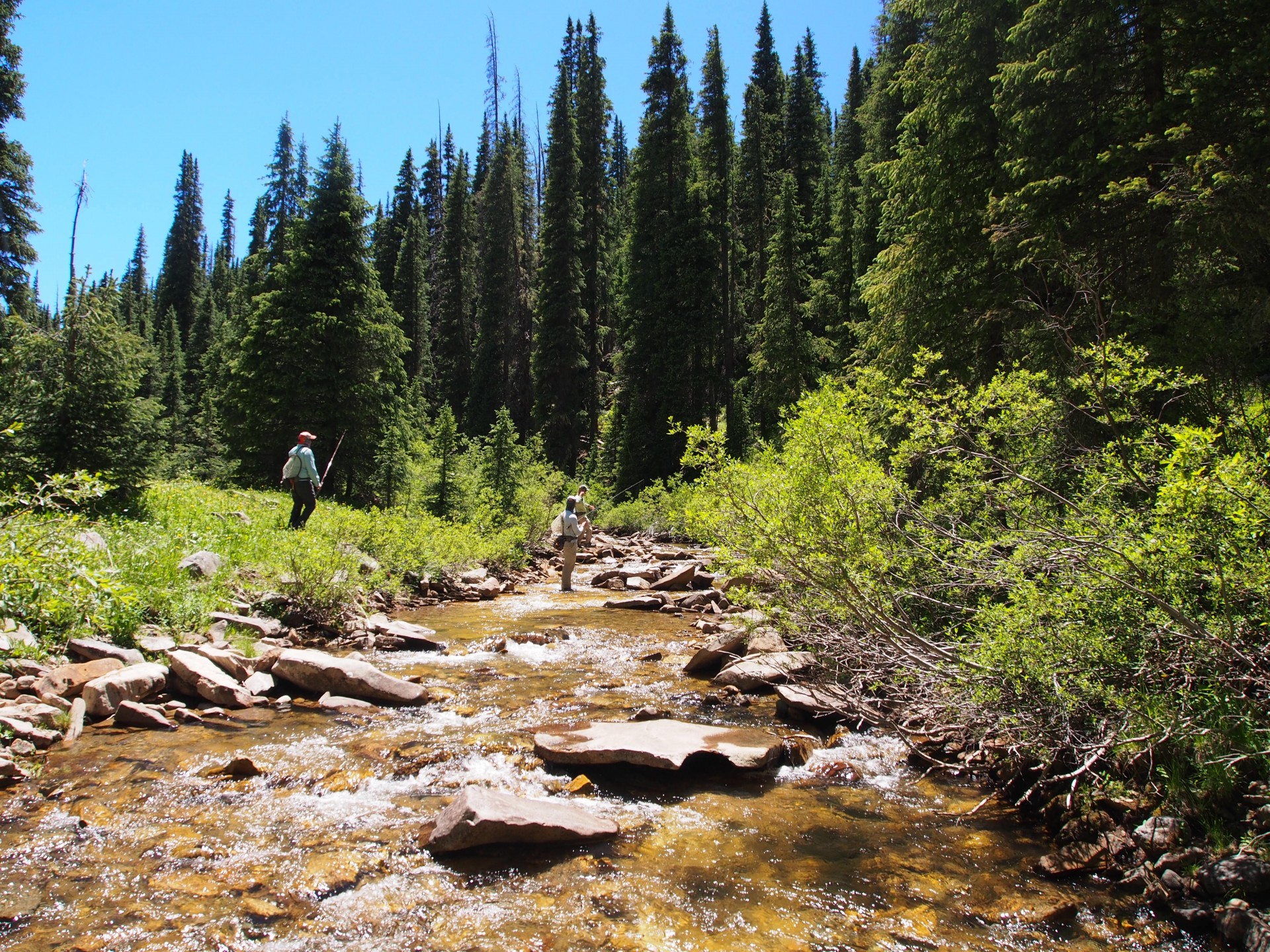- Home
- Photo Galleries
- Oklahoma
Oklahoma
July 2016
In South Georgia, cypress trees are synonymous with wood duck holes, gator swamps, and panfish. The long strands of Spanish moss that hang from their branches hold memories of early mornings pushing through lily pads before throwing out decoys for duck hunting and long, hot afternoons in aluminum John boats, getting hammered by mosquitos. Their nobs litter shallow wetlands of the backwoods, releasing tannic acid into dark waters. It can be an eerie sight. If you were to tell me I’d find a pristine trout stream running through their shadows with fish holding behind their roots, I probably would ask if you knew what a cypress actually looked like.
The Mountain Fork flows through Beaver Bend State Park, not far from Broken Bow, Oklahoma, resembling much of the Ozark land surrounds it, or in some ways, the Louisiana Bayou. As one may imagine, numerous panfish species, including bluegill and crappie, eagerly feed on crawfish and local bug life; however, this water has an unsuspected resident: trophy brown and rainbow trout. Upon first glance, I would have more readily believed Big Foot to be lurking in the woods around us, which is supposedly true according to local lore, than the fish that drew us to the area. Dad and I arrived late on July 4, 2016, after a day of trout fishing in Missouri, watching firework shows throughout out trip.
The next morning, Rob Woodruff of Woodruff Guide Service met us at 6:30 am. He quickly woke me up from my fog after a long week of fishing and driving. Bob took us into a misty section of river with big boulders and log jams and immediately initiated a clinic on some of my fishing techniques, addressing my mending style, high sticking, and my presentation as we threw a dry dropper rig in between rocks and in front of cypress nobs. I knew from our phone conversations that he was a loquacious guy, and that proved true on the water, reeling off story after story that blew my mind about the things he had seen in his time guiding the river. From big fish to big foot, he had supposedly witnessed it all. I needed to see a trout in the net to believe it.
Undoubtedly, I saw one pretty early that morning, but of course couldn’t connect when he sipped in my orange stimulator. Unfortunately, that was the only sign of trout for the first few hours, but I had my fun with bluegill and crappie eating streamers and hoppers near the dam. The river is a tailwater, releasing 50-degree water below a dam, making it habitable for trout throughout the entire year. Warm water species also find their way upriver during the warmer months and are certainly willing to take a fly. However, I couldn’t get my hands on our target species.
In the middle of the afternoon, we decided to try a different stretch of water, a small spillway creek that had been washed out earlier that year by 36,000 CFS flows that were released to account for excess rainwater while the dam and main spillway were under construction. Thankfully, some trout had begun returning up the creek after the flooding and Rob wanted to give them a try. The stream was especially clear and shallow with deeper cuts along the banks where fish held. We waded upstream by a massive gravel bed, about 20 feet tall and 150 yards long, that had been washed up by the flood. We were able to see some small trout darting around in the deeper pools, so I gave them a shot with a simple dry dropper rig. Slowly, a fish rose up off the bottom before darting out of the water to eat my fly. I set and I missed! A few casts later, I could see another fish open its mouth to consume my nymph underwater, and I again set the hook but missed. Fish after fish I fed and lost, even once getting one halfway to the net before he shook me off. I seem to have a special talent for letting them get away…
Finally, after moving up and down stream for an hour or so, I returned to the original pool and found a fish willing to take a small, black ant (which never fails). I stripped him into the net and proceeded to throw my hands up in joyous relief after releasing my first Oklahoma trout, a beautiful wild rainbow. I don’t think I have ever been more excited to land a fish under 10 inches. It is often the days you work the hardest that the fish are most rewarding, regardless of their size. Of course, they became much more willing after that, and my dad landed one as well. It was a day on the water to remember, and I know I will be back to the Sooner State, hopefully in the winter when the big fish are active, to chase its trout once again.

















